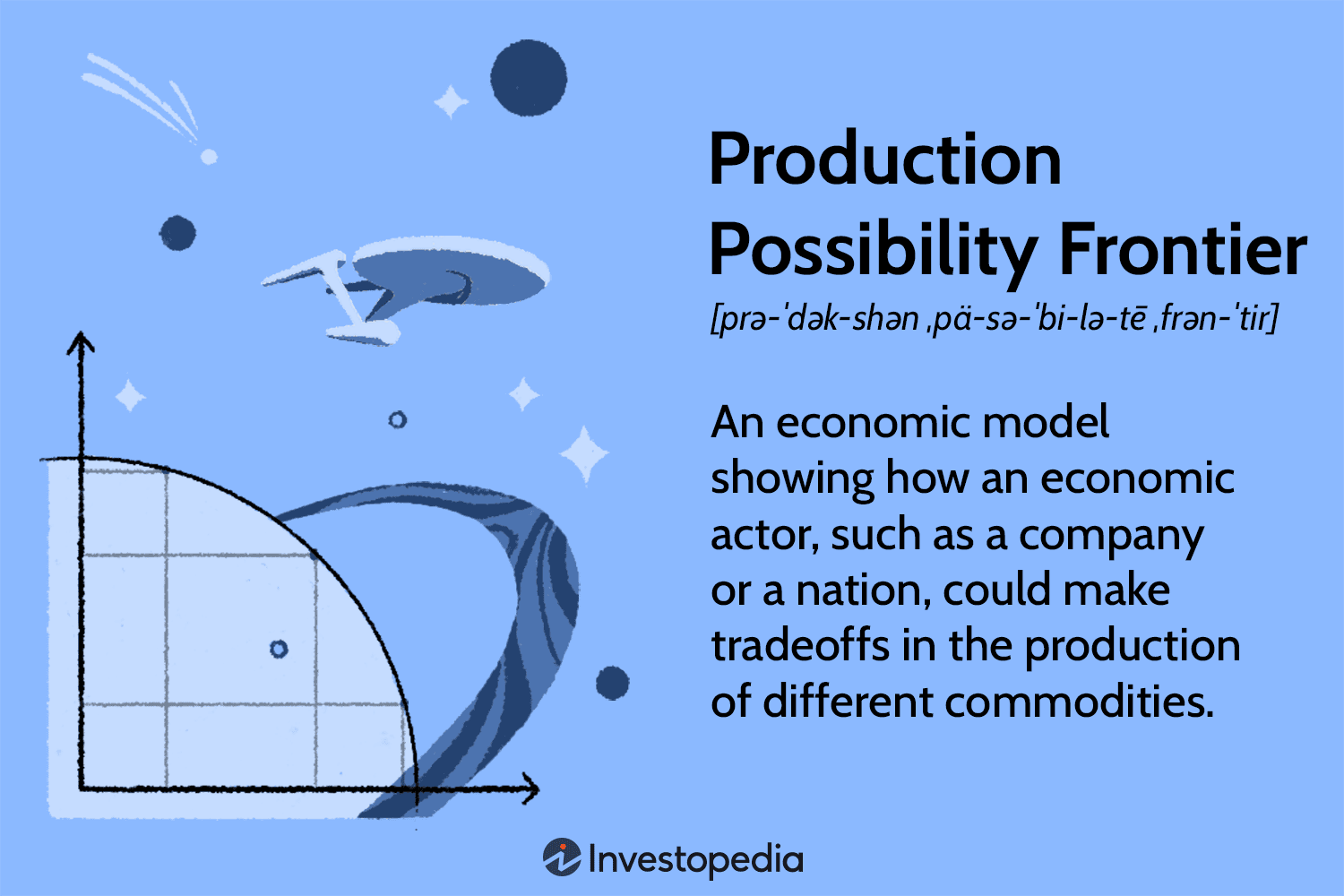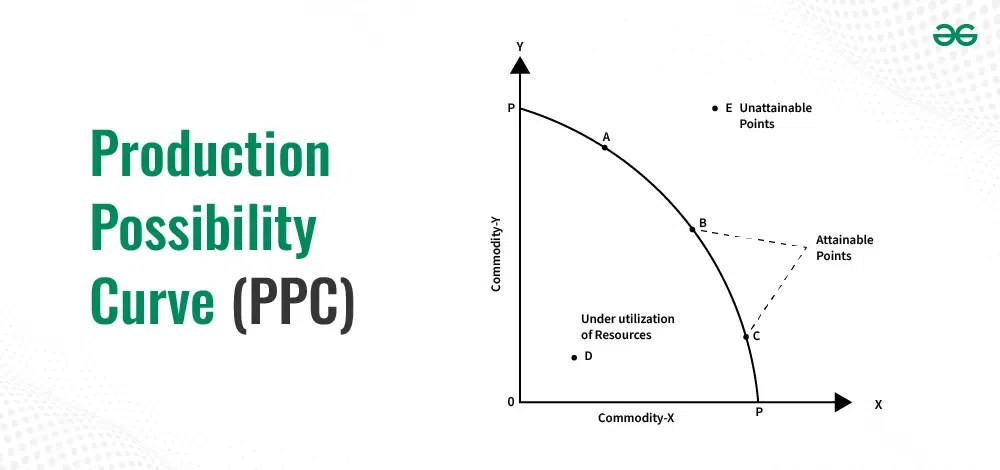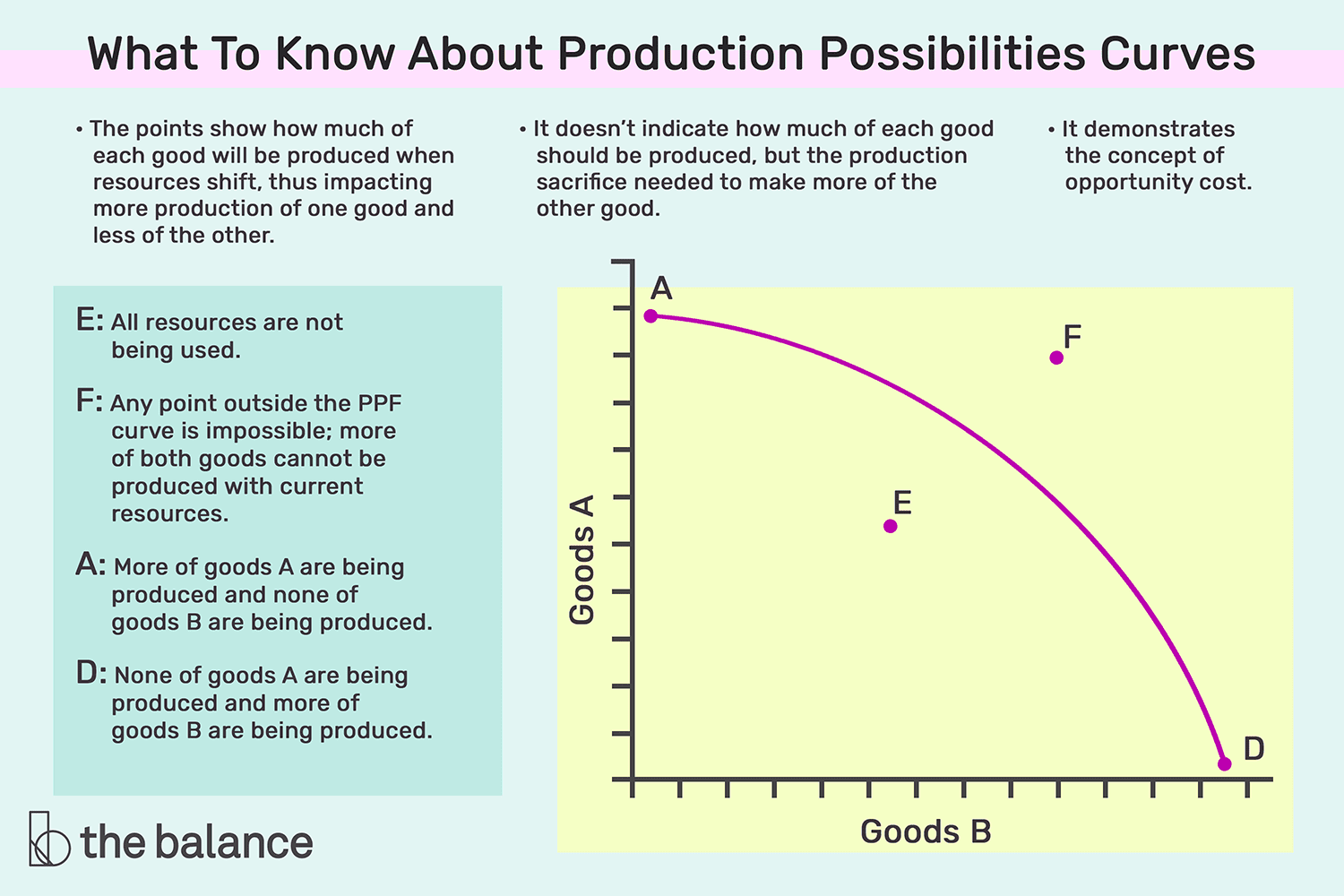The Production Possibility Curve (PPC) is a helpful tool in economics. It shows how a country can use its resources. It helps us understand choices and trade-offs. This article will explain the PPC in simple terms.
Understanding Resources
First, we need to know what resources are. Resources are what we use to make goods and services. They include:
- Land
- Labor
- Capital
- Entrepreneurship
Each of these resources plays a key role in production. Land gives us space and materials. Labor is the work people do. Capital includes tools and machines. Entrepreneurship is about people who create businesses.
What is the Production Possibility Curve?
The Production Possibility Curve shows the maximum output of two goods. It illustrates how much of one good can be produced. It also shows how much of another good can be produced. The curve looks like a bowed shape.
Let’s say we make two goods: cars and computers. The PPC will show how many cars we can make if we use all our resources to make computers. It also shows how many computers we can make if we use all our resources to make cars.
Why is the PPC Important?
The PPC is important for several reasons:
- It shows choices and trade-offs.
- It helps understand opportunity costs.
- It illustrates efficiency in production.
- It shows economic growth.

Credit: www.investopedia.com
Choices and Trade-offs
Every choice has a trade-off. When we decide to make more of one good, we make less of another. The PPC helps visualize this. For example, if we decide to make more cars, we have to use fewer resources for computers.

Credit: www.geeksforgeeks.org
Opportunity Cost
Opportunity cost is the value of what we give up. If we focus on making cars, we lose the chance to make computers. The PPC helps us understand this loss. It shows how much of one good we lose to make another good.
Efficiency in Production
The PPC also shows if we use resources efficiently. Points on the curve show maximum efficiency. If we are inside the curve, we are not using resources well. We can produce more of both goods if we use resources better. Points outside the curve are not possible with current resources.
Economic Growth
The PPC can shift. This shift shows economic growth. Economic growth happens when resources increase. For example, if a country discovers new technology, it can produce more. The PPC will shift to the right, allowing more goods to be produced.
Shifts in the PPC
There are two main types of shifts:
- Outward Shift: More resources or better technology.
- Inward Shift: Loss of resources or disaster.
Outward Shift
An outward shift of the PPC means the economy can produce more. This can happen through:
- Improved technology.
- Increased labor force.
- Discovery of new resources.
For example, if new machines are invented, production increases. The PPC moves to the right.
Inward Shift
An inward shift of the PPC means the economy can produce less. This can happen due to:
- Natural disasters.
- War or conflict.
- Economic recession.
For instance, if a country experiences a drought, it may produce less food. The PPC moves to the left.
Conclusion
The Production Possibility Curve is a powerful tool. It helps us understand economics better. It shows how resources can be used. It helps us see choices and trade-offs. The PPC illustrates opportunity costs and efficiency. It also shows economic growth and decline.
By learning about the PPC, we can make better choices. We can see how to use resources wisely. In today’s world, understanding economics is very important. The PPC provides a clear way to do this.
Final Thoughts
In summary, the Production Possibility Curve is simple but important. It helps us visualize choices in production. We can see how different goods affect each other. By understanding the PPC, we can understand economics better. This knowledge helps us make better decisions.
Whether you are a student, a teacher, or just curious, the PPC is valuable. It opens doors to understanding many economic concepts. Keep exploring and learning about economics!















Leave a Review